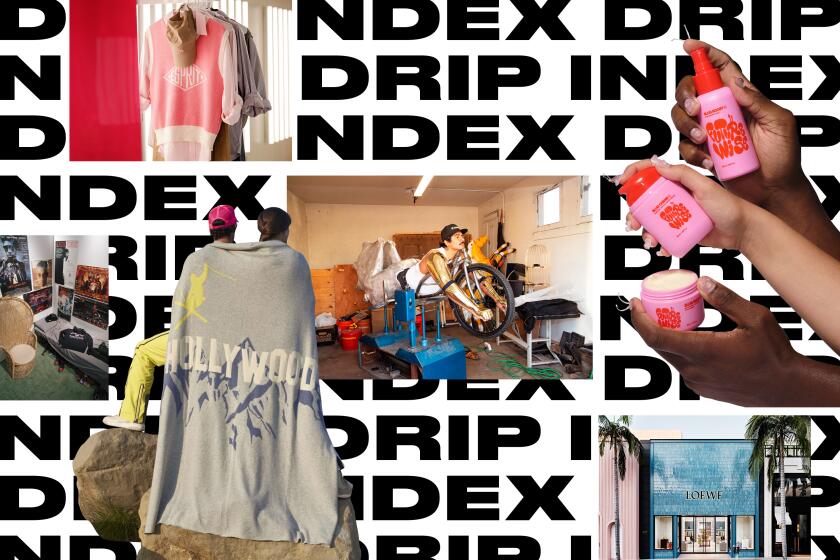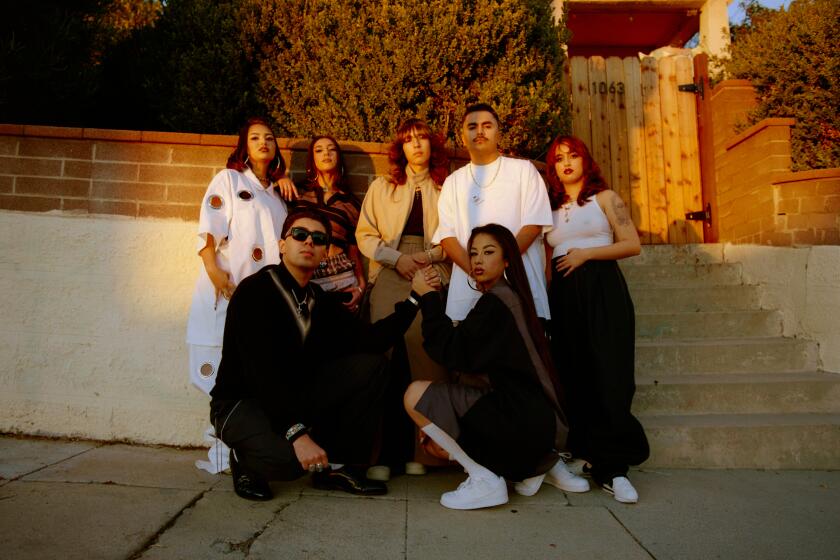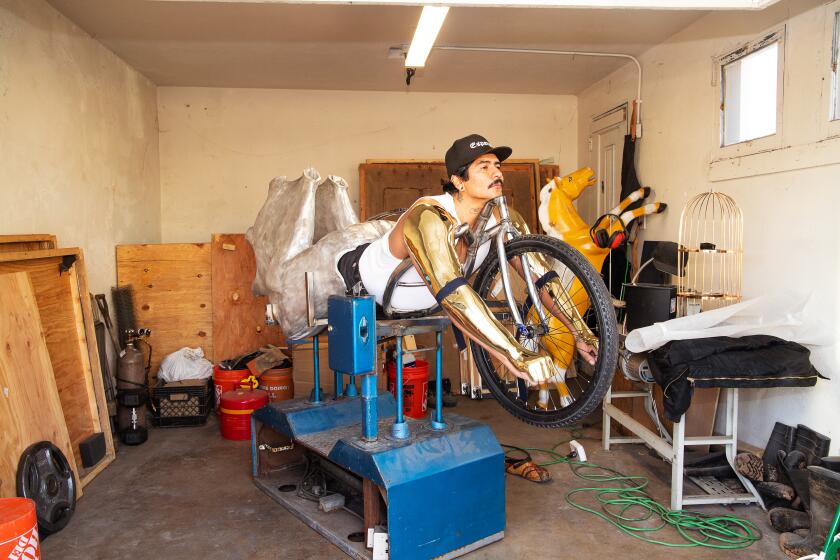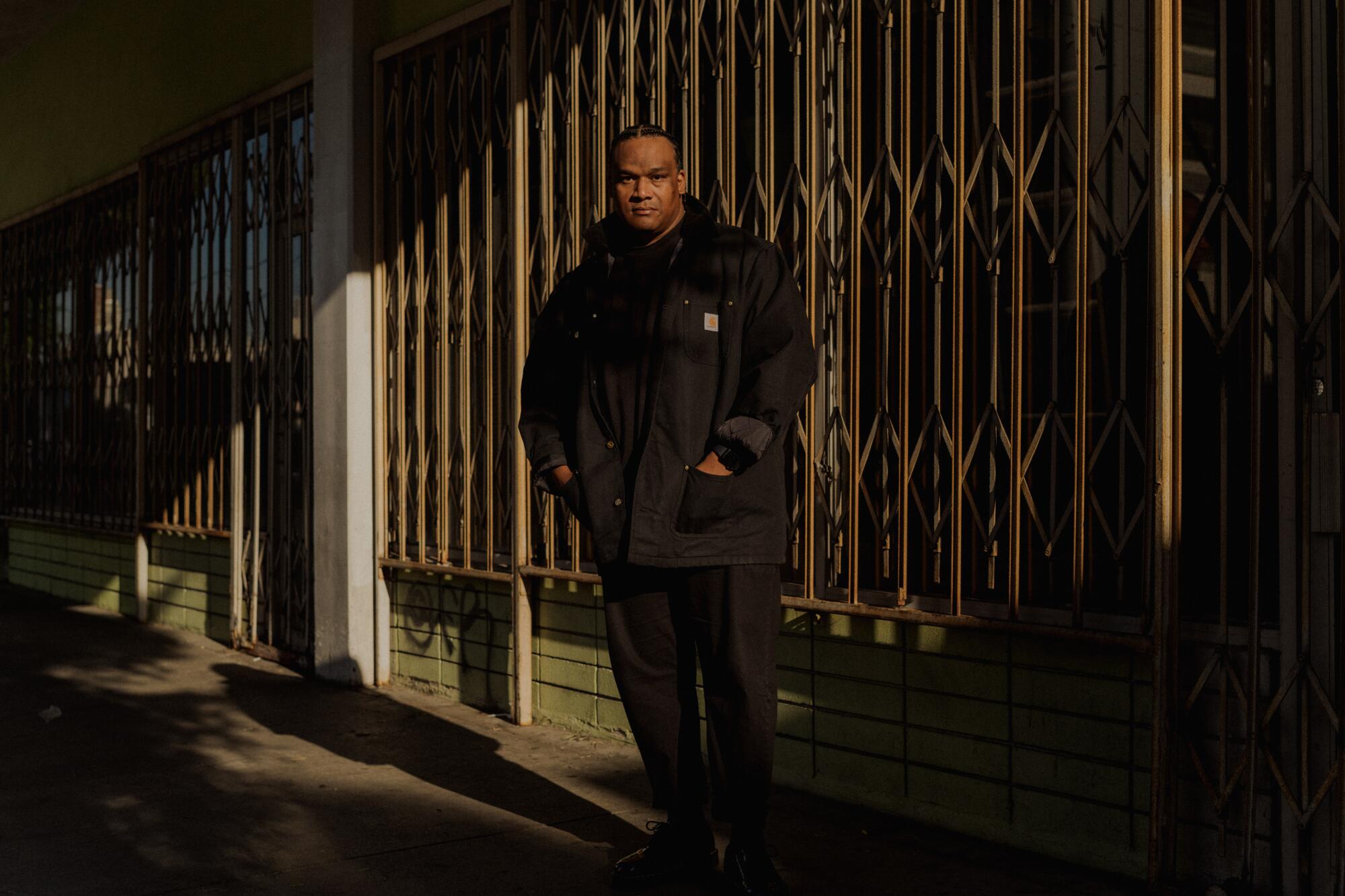
- Share via
This story is part of Image Issue 16, “Interiority,” a living archive of L.A. culture, style and fashion that shows how the city moves from the inside. Read the whole issue here.
I’ve never seen a flier for Metro. Never. I’m pretty sure they existed, but they just never came out our way.
The first time I heard about Metro was right after high school. I want to say like 2000, 2001, 2002. I had a homeboy whose cousin lived out in Riverside, and he told us about Metro. He kept hounding us, hounding us, hounding us. Like, “You gotttttttttta come to the club, man!” And we’re just like, “Nah, man. We’re not going to f—ing Riverside for a club. No. It’s not gonna happen.”
One day he was actually out here — in Gardena. So, we had to drive him back, and he was like, “Man, let’s just go by Metro.” We went and my mind was f—ing blown. When I went in there, it was like, “What the f— is this?”
The layout was weird. When you walked in, there were three options: If you walked in and you went to the left, it was the hip-hop room. If you went straight, it was like going to Florentine Gardens — nothing but techno, trip hop, all that stuff. (They would play some Latin jams here and there.) And then if you went to the right, it was the white room. Straight-up pop, whatever it was at the time — Britney Spears. All that got played in there. It was like Choose Your Own Adventure. In every room they had two or three go-go cages. It had nothing but dungeon vibes.
Of course, we would naturally go to the hip-hop room. I remember my button-down shirt. I had a button-down Tommy Hilfiger shirt. And that s— was just f—ing drenched. Like, I had to take it off. I’d have my Pro Club underneath, and it was drenched.
But, you know, sometimes we went over to the other rooms just to check it out, see what’s up. Let me tell you: it was highly segregated in there. You knew who you were, and you knew where you were supposed to go. If you kind of ventured off into the rooms and you went too deep, either fights broke out or you would get mad stares. Like, “What the f— you doing in here?”
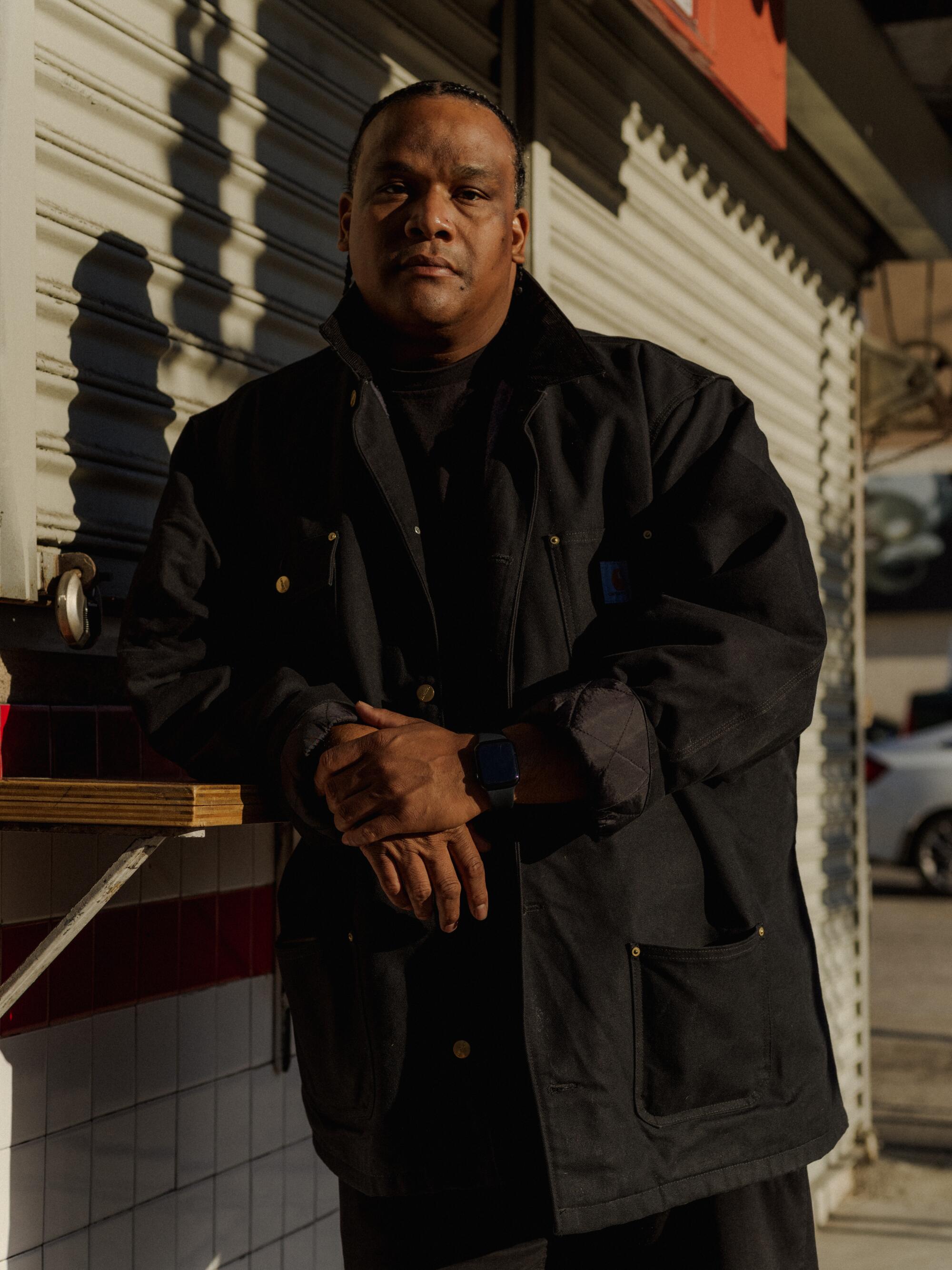
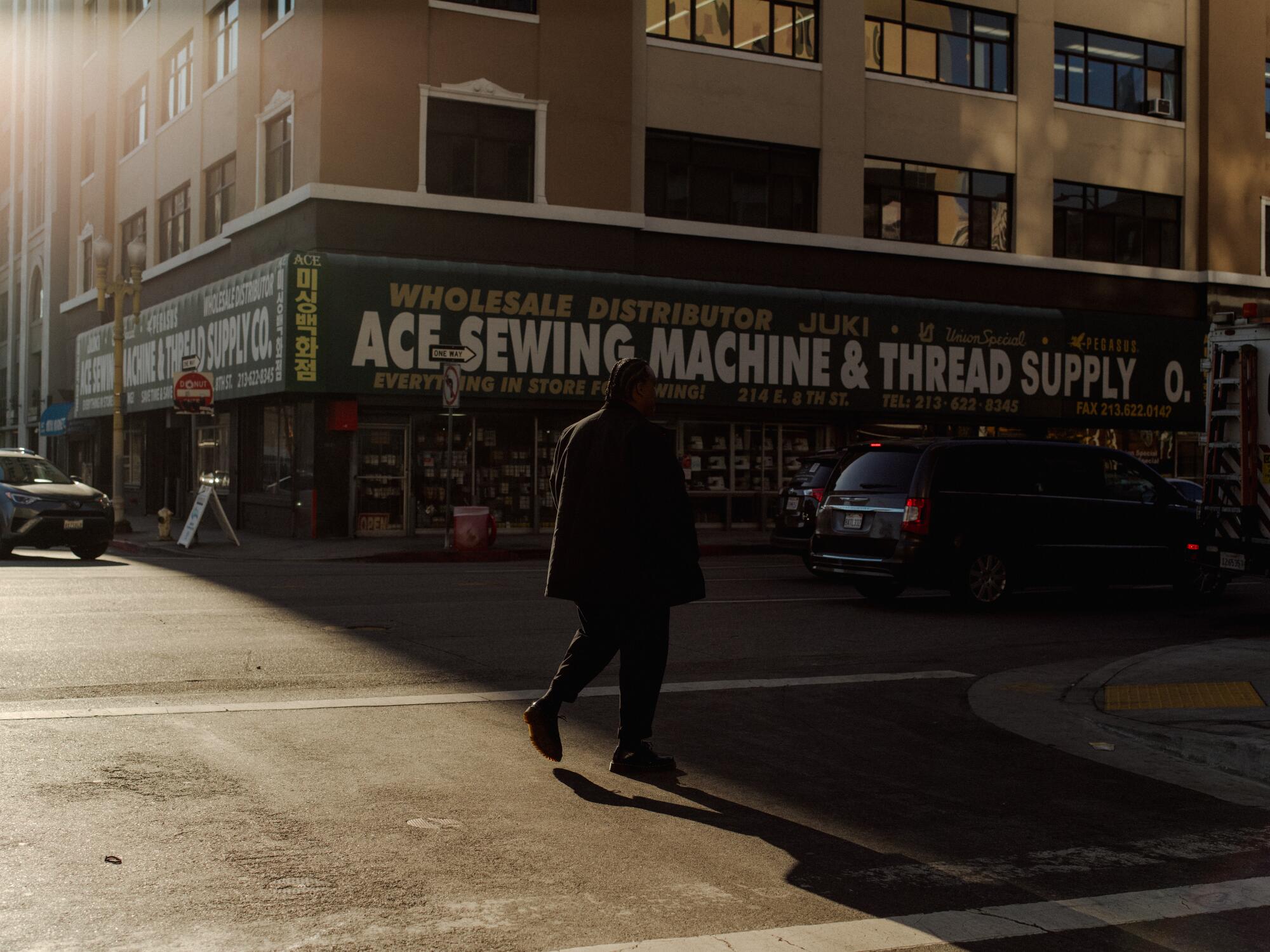
The common room where everybody went was the parking lot. That was like the United Nations of Riverside right there. Everybody in the parking lot was trying to holler, trying to spit to someone. Everybody was out there trying to get numbers. I didn’t realize this at the time, but it was very futile trying to get a number out there because mostly locals went out there.
The situation was the “Fast and Furious” background scene. You had your tuners. You had some old schools out there. You had your Beamer clubs. All these different clubs were out there. You did have some L.A. representation out there. Maros. The Firebird had just revamped. My homeboy had an Acura. So, you know, we were, like, five deep in the two-door Acura.
It looked just like a dilapidated mall parking lot. It was huge, and it was right off the freeway. You could see the club from the freeway. Remember “Back to the Future”? That Twin Pines Mall? Just imagine that 30 years in the future, but still the same.
More stories from Interiority
rafa esparza on the story of ‘Corpo RanfLA: Terra Cruiser’
Sam Muller unpacks the oral history of Hollywood High 16
Julissa James examines the style legacy of Homies
Angela Flournoy talks to Robin Coste Lewis about ‘deep time’
Alan Nakagawa remembers the Japanese market on wheels
Back then, there weren’t too many options for 18 and over in L.A. There weren’t enough places for kids. You could do the Shaw. You could do Sunset. You could do maybe Florentine Gardens. Arena and Circus. We weren’t old enough to get into Miyagi’s. You have all that energy, young bravado and you have that sense of invincibility. Like, Let me try to experience the world in a way I haven’t before.
I grew up in K-Town. On Serrano, between 11th and Olympic. That neighborhood influenced me as far as the multicultural aspect. In that neighborhood, it was Mexicans, Central Americans, Koreans and a few Black people. That informed me that we’re in a melting pot together. My best friend was Billy. He had three older brothers, and they were Latin metal heads. I would sit there playing Nintendo, and all I heard was Metallica, Anthrax, Danzig. Heavy metal influence. That opened me up to music. Something about listening to music or playing video games — you’re concentrating real hard, but then you’re getting this uninterrupted audio feed that’s just going straight through your ear canals. Once you’re focused on something, everything else is auditory input.
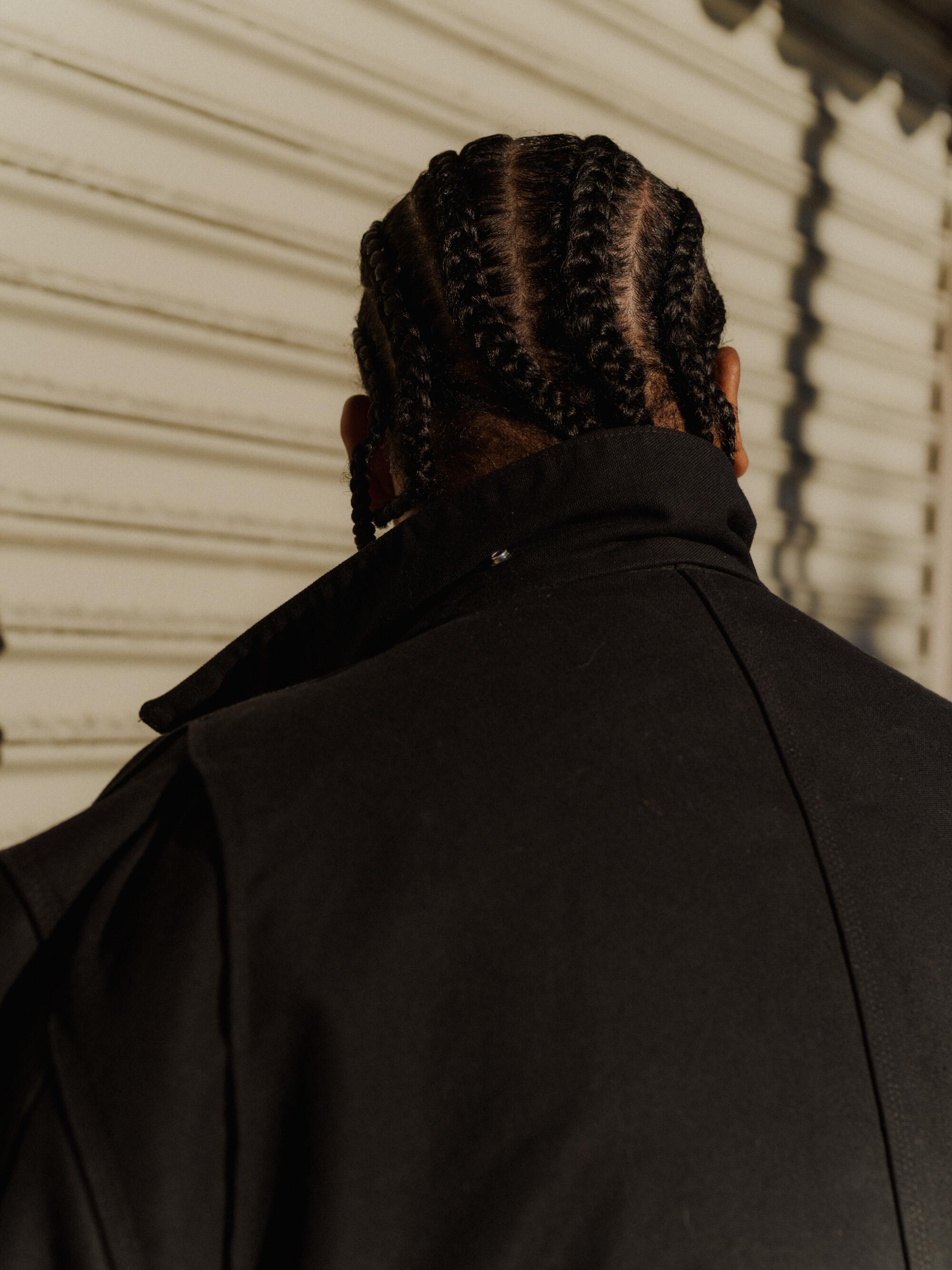
We moved from K-Town to Inglewood. That’s when I started going to private school. I started third grade at Inglewood Christian, and I didn’t like it much. I didn’t like the uniform at the time. Now I wear a uniform — if I could wear khakis, a T-shirt, and a sweater or something, I’m set. Hella preppy, dad core. I went to private school from third grade on. The whole thing about private school is, how do you make your uniform look fresh? Is it shoes? Is it khakis or is it Dockers? For me, it was always: how can you look clean but basic? Somebody told me, “Man, you dress like a ‘90s drug dealer,” and I guess I adopted that. Except one thing: no creases in your pants. Creases were for squares. At least for us. We weren’t creased up like that.
My mom worked a lot, and I ended up walking home a lot. That was a whole mindf— because Inglewood Christian is right by Market Street. Inglewood High is literally the next block over. You always hear stories of people getting shot on Market Street. I don’t think anybody was really getting shot. Probably got shot at, but nobody got shot. So, you’re just trying to navigate this whole thing.
I remember one specific story: I was on my way home and this dude stopped and asked me what size my shoe was. Mind you, I had on 8s or 7s. I know now I shouldn’t have told them my size. I was looking around. I was like, Alright, can I run? I was hella chubby back then. I’m not running. There was this patch of mud, so I literally jumped in the mud, f—ed up my shoes. I was like “Yo, you still want them now?” And dude was like “F— you!” And then he beat my ass. He didn’t take them, but my shoes were messed up and I came home crying. I told my mom the story and she helped me clean them the best she could.
Inglewood felt more alive back then. There was always something to do. It was legit like “The Wood.” There was a pizza place all the kids went to. Kids could just go hang out.
I felt like us getting older made us a little more jaded to those kinds of things. There were no arcades for kids, really, outside of these big boxes, like Chucky Cheese.
I went to Cal State Long Beach, and some of my homies went to Long Beach. Fridays were date night. Saturdays were for the homies. You heard somewhere was cracking through a text on your Nokia. But 5-0s would break up every party, used to run everyone out. So we tried to find an alternative to that.
We just wanted to holla at girls. We wanted to dance. We wanted to just have fun and not have to worry about all this gang s— that was happening. If we didn’t have anything activated by like, 9:30? “Let’s smash out to Metro.”
It was almost a type of freedom — we made the choice to smash there.
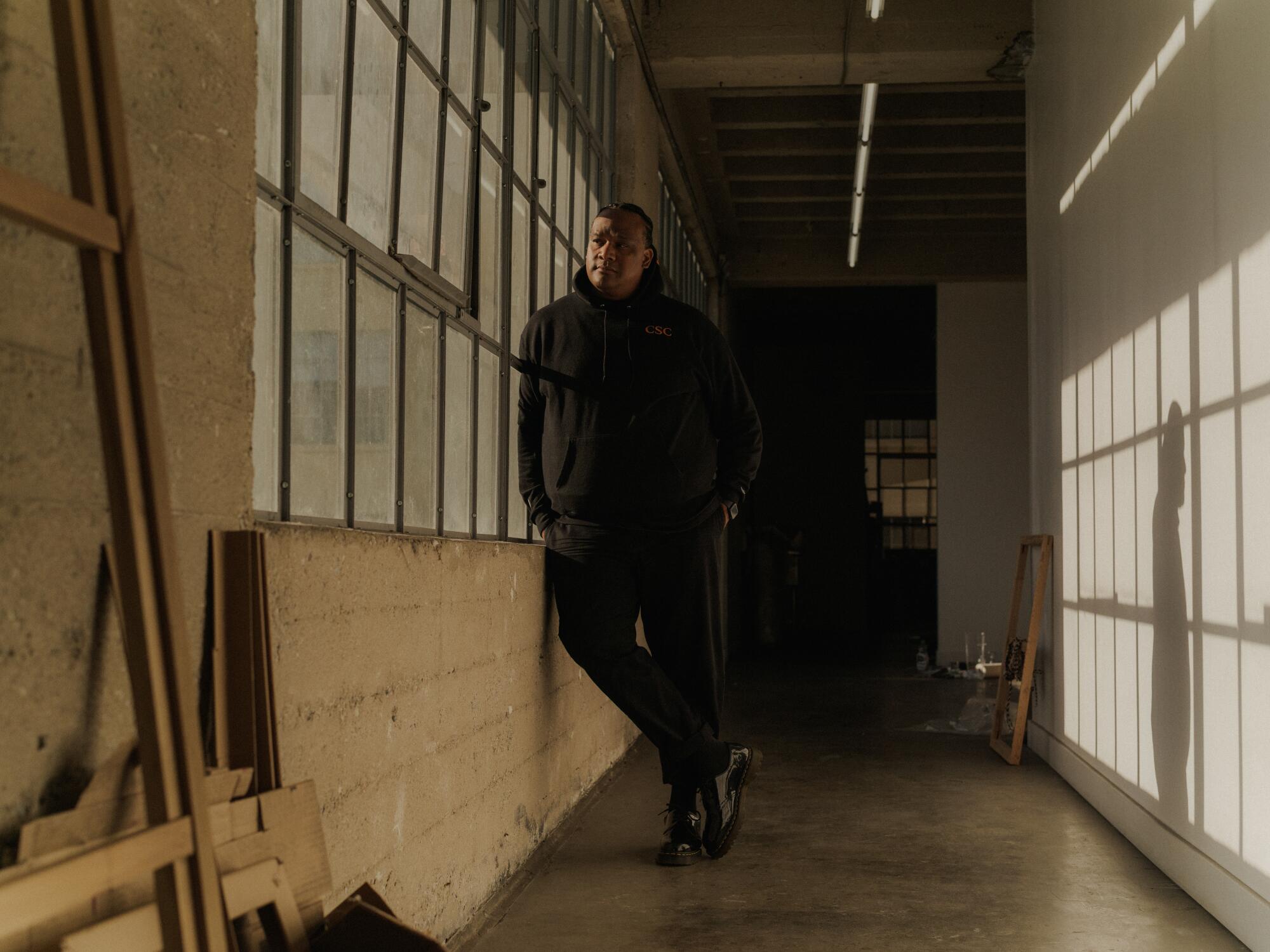
We had a cutoff time. It took us like an hour and 15 minutes. We had to make sure we got there before like 10:45, 11 o’clock. We all pitched in to go out there. We all put five bucks in the tank. We stocked up on our snacks and we just smashed out there. The journey itself was fun, like a mini road trip.
Metro represented camaraderie. It was 18 and up. Ten bucks to get in — if that. But the thing about it was that you could just find a groove. Find your home. Find your people. Find your tribe. You could do that there.
Just getting all those kids of different backgrounds into one single place was nuts. There was cross-pollination in the room. It was legit, like, strawberry, chocolate, vanilla, like three flavors — straight Neapolitan. But you could find your tribe.
Leading up to it was the best s—. Then afterwards, in the parking lot we were like, “Yo, are we going to smash back to L.A. and try to go to Jerry’s Deli right now? Is that what we’re trying to do?”
If we could get there before 2:30 a.m., we’re good.
Rick Garzon is the gallery director at Residency Art in Inglewood. Born and raised in Inglewood, Garzon noticed a lack of commercial art spaces in South-Central that centered artists of color and provided a platform for their work. This led to the formation of Residency Art, which is committed to celebrating contemporary artists that continue to make projects for communities of color.
More stories from Image
